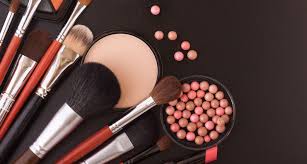
With the rise of social media, companies are focusing more on influencer marketing and user-generated content to promote their products. Another trend is the emphasis on eco-friendly and sustainable packaging. Companies like Calaso have become increasingly popular for their environmentally friendly and reusable bottles. In addition to sustainable packaging, companies also cater to the demand for personalised products. Many brands now offer customised skincare and makeup products to meet the unique needs of their customers. The rise of gender-neutral and non-binary beauty products is another trend in the industry, with brands offering more gender-inclusive cosmetic bottles and marketing. Virtual try-on technology has also become popular, allowing customers to try products before purchasing them. Brands also utilise artificial intelligence (AI) to provide personalised recommendations based on a consumer’s unique skin type, concerns, and preferences.
The rise of influencer marketing in the beauty industry
In recent years, the beauty industry has seen a significant rise in influencer marketing, with brands partnering with famous social media personalities to promote their products. Influencer marketing is seen as a more authentic and relatable way to reach consumers, as influencers are perceived as experts in the beauty industry and have established loyal followers. Beauty influencers, like Jackie Aina and James Charles, have gained millions of followers on social media platforms like YouTube and Instagram, providing brands with a vast audience. Besides partnering with established influencers, brands are also turning to micro-influencers with smaller but highly engaged followings to promote their products. This trend is prevalent in the beauty industry, where niche audiences can be targeted based on specific interests, such as vegan or cruelty-free beauty products.
The role of social media in shaping beauty trends
Social media has played a significant role in shaping beauty trends. Platforms like Instagram and TikTok provide a platform for beauty influencers to share their favourite products and techniques with their followers. Beauty trends can now go viral in a matter of hours, with hashtags like #makeuptutorial and #skincare becoming increasingly popular. Social media has also given rise to new beauty trends, such as the “no-makeup makeup” look, which emphasises natural-looking skin and minimal makeup. Additionally, social media has allowed consumers to discover and support niche beauty brands that might not have been accessible before. For example, Glossier, a beauty brand that first gained popularity through social media, has since become a household name. Social media platforms have provided a direct line of communication between consumers and brands, allowing consumers to share their feedback, ask questions, and voice concerns.